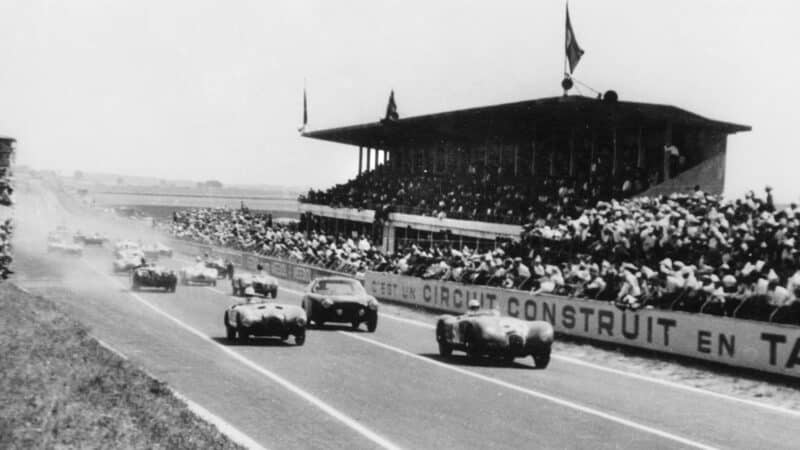Dunlop and Jaguar: Pioneers of Disc Brake Technology in Road and Racing Cars
Jaguar, Dunlop and the development of the disc brake

Leading the way in that historic race at Reims
When Moss won at Reims, the disc brake was already almost half a century old, as patent applications for just such a device, dated in 1903 from the remarkable Dr Frederick Lanchester, show. But it was only after the war and in an entirely different application that they came into their own.
Dunlop’s first disc brakes were not designed for cars at all, but aircraft. With the dawning of the jet era and increased aerodynamic efficiency, aircraft were having to land at ever higher speeds, taxing extant drum brake technology beyond its practical limit. So bad was this problem that according to Dunlop, “brake design was becoming the factor limiting aircraft performance”. The beauty of the disc was that it was exposed to the high-speed airflow and would therefore suffer none of the overheating issues that plagued enclosed drum brakes. Moreover there would be only one application of the brakes per flight and no corners to negotiate, so the problems of knock-off and boiling fluid that would dog Jaguar never appeared. Dunlop aircraft discs first appeared in 1947 and by the 1950s were in widespread use throughout the industry.
Jaguar was not even the first to put a disc brake onto a road car, that accolade seemingly belonging to America’s little-remembered and apparently fairly ghastly 1949 Crosley Hotshot, among whose other less-vaunted claims to fame was to appear in Time magazine’s ‘50 Worst Cars of All Time’. The discs were so troublesome – failing to work if there was salt on the road in sub-zero temperatures – that they were soon abandoned in favour of conventional drums. Chrysler also had a go at discs, making them available on the Imperial from 1950 but these were fully enclosed and were also swiftly abandoned.
So it was Dunlop, ably and eagerly abetted by Jaguar, which can properly be credited with the design and development of the first viable disc-braking system for road and racing cars. Much of the work was entrusted to Norman Dewis, who had the first factory C-type, XKC001, put at his disposal to iron out the many bugs in the design.
But the real hero of the piece was XKC003, the 1951 Le Mans winner which, on April 14 1952, made the disc’s competition debut at Goodwood with Moss driving, coming home fourth but claiming fastest lap.
Goodwood was seen as little more than a toe in the water with Stirling driving with uncharacteristic caution to preserve the brakes. What was needed was a real test and, as luck would have it, the Mille Miglia was but three weeks away.
Stirling, Dewis and 003 were dispatched to Brescia with instructions to gather data. No result was expected or even deemed desirable if it meant risking the C-type and the loss of invaluable testing mileage. In the event, the daring duo would have ended up in third place had the car not skidded off the road in terrible weather with fewer than 200 of the 1000 miles to go. Even so, the brakes had withstood the rigours of the Futa and Raticosa passes and its occupants had noticed how easy it was to outbrake even the fastest, best-developed drum brake-equipped competitors.
Tragically 003 (along with its 001 and 002 sisters) were then scrapped by the factory, their purpose having been served. Had they been preserved, their value today would be near enough incalculable. Hindsight can be a very frustrating thing.

